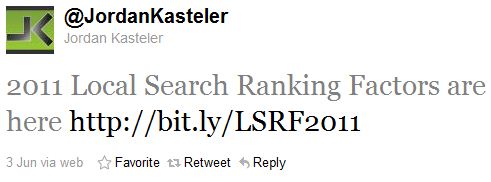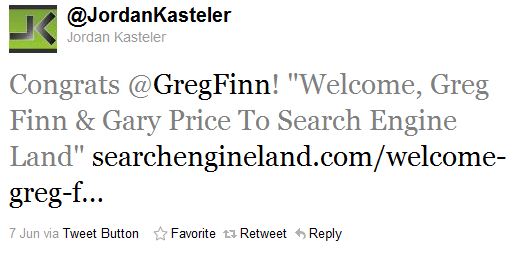Blind Social Sharing & Its Effect On Personal Credibility
Social media may seem like ‘information overload’ for some, especially since there are now thousands of tweets sent per second and millions of people with a Facebook account. But how is this information created and sent? What is the ratio of actual unique information compared to the amount of re-tweets and Facebook posts about it? […]
Social media may seem like ‘information overload’ for some, especially since there are now thousands of tweets sent per second and millions of people with a Facebook account. But how is this information created and sent? What is the ratio of actual unique information compared to the amount of re-tweets and Facebook posts about it?
These types of questions lead to the question of how much content is actually consumed versus how much of it is being shared. Sharing content to share it is a legitimate strategy for some — just look at Guy Kawasaki. As a co-founder of news aggregation website Alltop, he has become an Internet marketing legend, with over 364,000 followers on Twitter as of June 2011.
However, the line between becoming a credible news resource and one that simply spews links is sometimes a fine one. Guy Kawasaki does a great job of promoting appealing content that is interesting to most online users, but for social media users in a niche industry, it becomes harder and hard to attract a bigger, loyal following on links alone.
Blind Links
Blind Links are social media posts that are simply an article title and a URL:

While this seems like a relatively harmless way to share information (and the majority of Twitter users are likely guilty of it), blind link overload can lead to devalued credibility and social influence. This is because most tweets with shared links should include the opinion of the person tweeting it.
Of course, many article titles speak for themselves, but otherwise commentary (not always for businesses, more so when it’s on a user’s personal Twitter page) by the user provides their opinion and personal insight on the subject.
When it comes down to it, not all links need to include commentary, and blind links shouldn’t necessarily be avoided. It is too much of one thing that can generally cause users to ignore all tweets.
Personal tweets about experiences and events thrown in with tweets that share links and information is a good mixture of credibility and humanization—allowing readers to benefit from a user’s knowledge and what they’ve seen, while also allowing them to see the user’s personal life.
Perils Of Blind Re-Tweets
Another type of blind sharing, called blind re-tweets, occur when a user re-tweets a link/tweet without actually reading the article that the link goes to.
A Mashable article from April 2011 by David Spark discusses this phenomenon and even provides a graph of data showing the discrepancy between actual visits to a blog or webpage versus the number of times the URL was shared via Facebook/Twitter/Etc.
But how can a blind re-tweet affect a user’s online credibility? Actually, in a number of ways. For starters, if a user shares a link that they hadn’t checked, it may turn out to be a spammy link that doesn’t go to the information the title alluded to.
Questionable Sources
Besides sharing spammy links, the users that are being re-tweeted (and in turn @ mentioned) themselves may also pose a credibility risk to the user who is re-tweeting. If a user is flagged for spam or has posted a lot of spammy links in the past, a person who is reading a re-tweet may click on the @ mentioned user’s name and see their profile and recent tweets.
If some are questionable, this may cause them to unfollow the person who was re-tweeting the information. In these instances, sources are just as important as the links and information they are claiming to provide.
Is A Good Balance Possible?
What seems like information overload to some may seem like just the right amount to others. Many blogs and articles have discussed under-posting on Twitter and Facebook (as well as over-posting), but for those that want to have an active social media presence without spending all day searching for content share, sometimes scheduled tweets and blind links are a must.
A steady stream of information is sometimes the most consistent approach rather than 10 tweets between 8-8:30 am with nothing else said throughout the day. A few tweets each day, varying between personal commentary, links with insight, and blind links may be the best approach to produce a well-rounded Twitter account.
Contributing authors are invited to create content for Search Engine Land and are chosen for their expertise and contribution to the search community. Our contributors work under the oversight of the editorial staff and contributions are checked for quality and relevance to our readers. The opinions they express are their own.
Related stories
New on Search Engine Land
